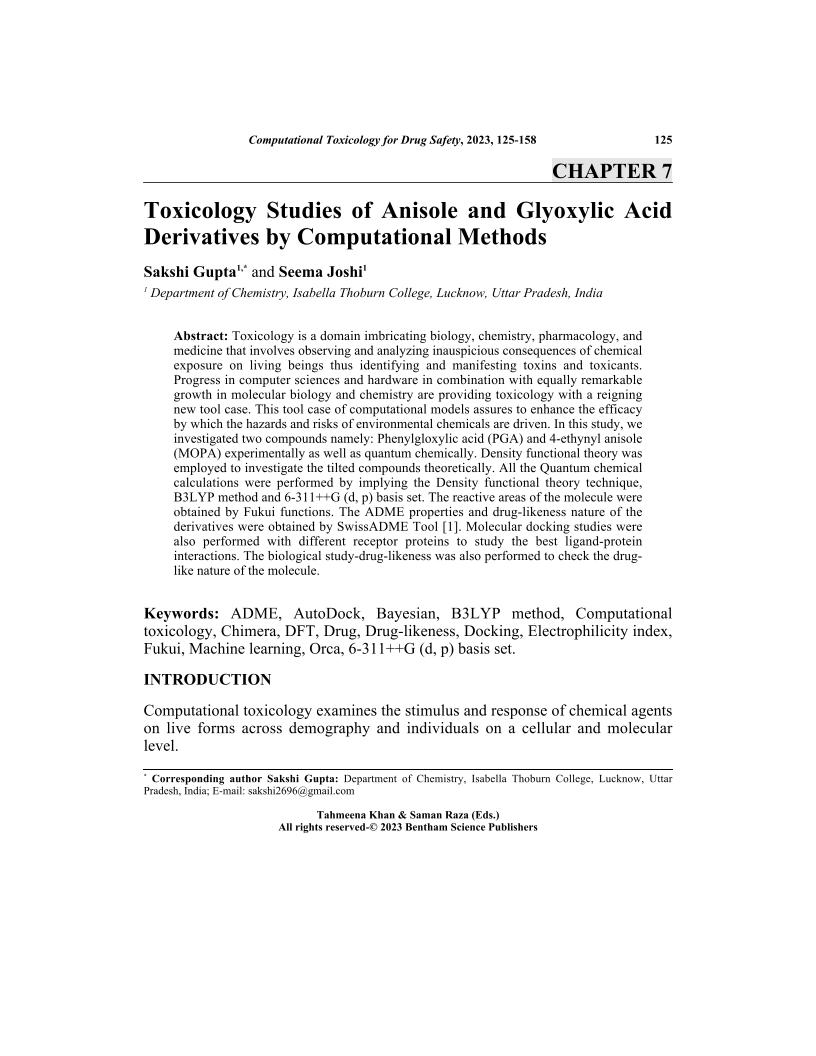Toxicology Studies of Anisole and Glyoxylic Acid Derivatives by Computational Methods

- Authors: Sakshi Gupta1, Seema Joshi2
-
View Affiliations Hide Affiliations1 Department of Chemistry, Isabella Thoburn College, Lucknow, Uttar Pradesh, India 2 Department of Chemistry, Isabella Thoburn College, Lucknow, Uttar Pradesh, India
- Source: Computational Toxicology for Drug Safety and a Sustainable Environment , pp 125-158
- Publication Date: December 2023
- Language: English
Toxicology Studies of Anisole and Glyoxylic Acid Derivatives by Computational Methods, Page 1 of 1
< Previous page | Next page > /docserver/preview/fulltext/9789815196986/chap7-1.gif
Toxicology is a domain imbricating biology, chemistry, pharmacology, and medicine that involves observing and analyzing inauspicious consequences of chemical exposure on living beings thus identifying and manifesting toxins and toxicants. Progress in computer sciences and hardware in combination with equally remarkable growth in molecular biology and chemistry are providing toxicology with a reigning new tool case. This tool case of computational models assures to enhance the efficacy by which the hazards and risks of environmental chemicals are driven. In this study, we investigated two compounds namely: Phenylgloxylic acid (PGA) and 4-ethynyl anisole (MOPA) experimentally as well as quantum chemically. Density functional theory was employed to investigate the tilted compounds theoretically. All the Quantum chemical calculations were performed by implying the Density functional theory technique, B3LYP method and 6-311++G (d, p) basis set. The reactive areas of the molecule were obtained by Fukui functions. The ADME properties and drug-likeness nature of the derivatives were obtained by SwissADME Tool [1]. Molecular docking studies were also performed with different receptor proteins to study the best ligand-protein interactions. The biological study-drug-likeness was also performed to check the drug like nature of the molecule. <br>
-
From This Site
/content/books/9789815196986.chap7dcterms_subject,pub_keyword-contentType:Journal -contentType:Figure -contentType:Table -contentType:SupplementaryData105

